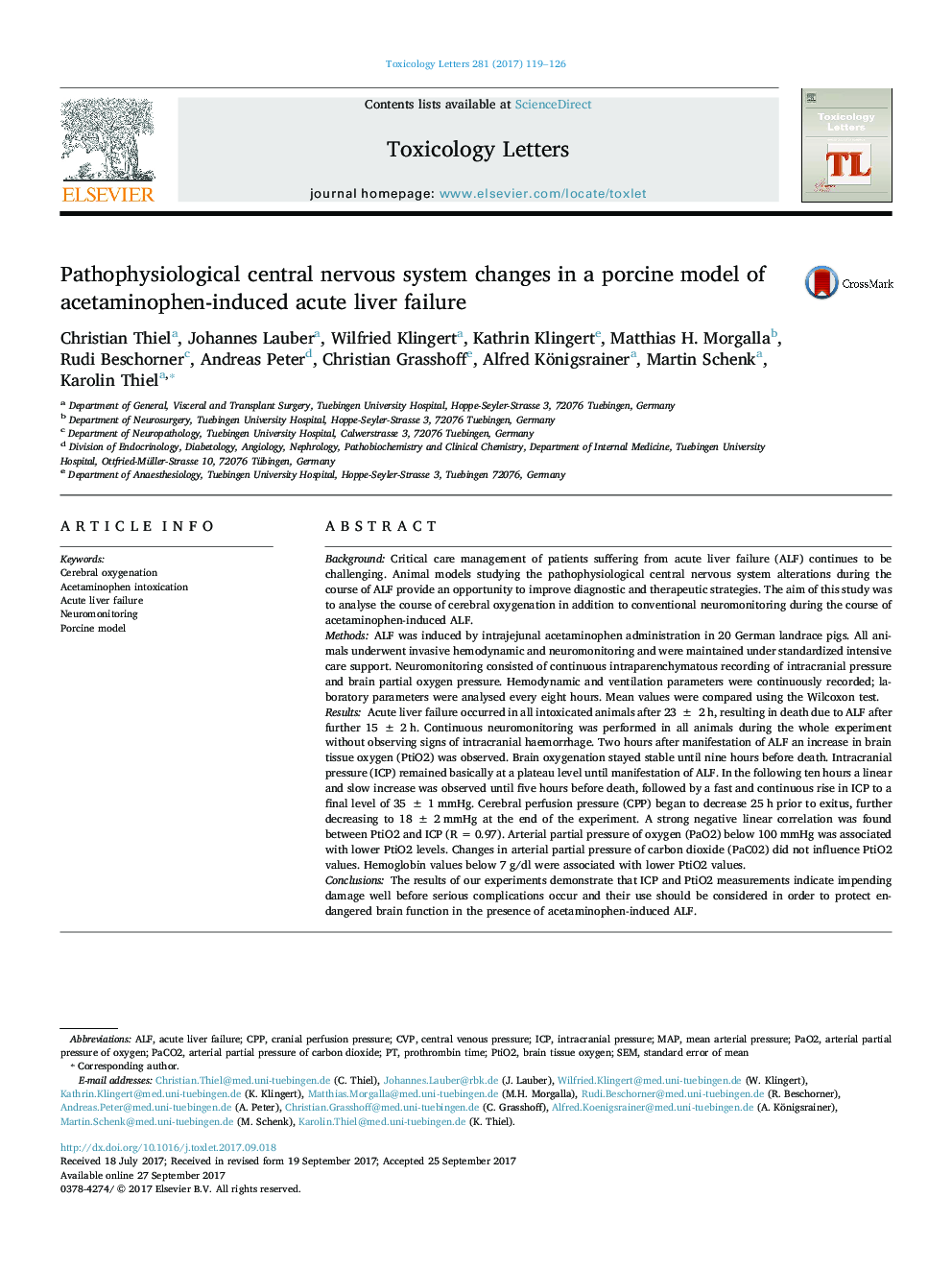| کد مقاله | کد نشریه | سال انتشار | مقاله انگلیسی | نسخه تمام متن |
|---|---|---|---|---|
| 5562005 | 1562591 | 2017 | 8 صفحه PDF | دانلود رایگان |
- Cerebral oxygenation during the course of AAP-induced ALF in pigs was monitored.
- PtiO2 increased 2Â h after ALF and stayed stable until nine hours before death.
- A strong negative linear correlation was found between PtiO2 and ICP.
- ICP and PtiO2 indicate impending damage before serious complications occur.
- Their use should be considered in order to protect endangered brain function.
BackgroundCritical care management of patients suffering from acute liver failure (ALF) continues to be challenging. Animal models studying the pathophysiological central nervous system alterations during the course of ALF provide an opportunity to improve diagnostic and therapeutic strategies. The aim of this study was to analyse the course of cerebral oxygenation in addition to conventional neuromonitoring during the course of acetaminophen-induced ALF.MethodsALF was induced by intrajejunal acetaminophen administration in 20 German landrace pigs. All animals underwent invasive hemodynamic and neuromonitoring and were maintained under standardized intensive care support. Neuromonitoring consisted of continuous intraparenchymatous recording of intracranial pressure and brain partial oxygen pressure. Hemodynamic and ventilation parameters were continuously recorded; laboratory parameters were analysed every eight hours. Mean values were compared using the Wilcoxon test.ResultsAcute liver failure occurred in all intoxicated animals after 23 ± 2 h, resulting in death due to ALF after further 15 ± 2 h. Continuous neuromonitoring was performed in all animals during the whole experiment without observing signs of intracranial haemorrhage. Two hours after manifestation of ALF an increase in brain tissue oxygen (PtiO2) was observed. Brain oxygenation stayed stable until nine hours before death. Intracranial pressure (ICP) remained basically at a plateau level until manifestation of ALF. In the following ten hours a linear and slow increase was observed until five hours before death, followed by a fast and continuous rise in ICP to a final level of 35 ± 1 mmHg. Cerebral perfusion pressure (CPP) began to decrease 25 h prior to exitus, further decreasing to 18 ± 2 mmHg at the end of the experiment. A strong negative linear correlation was found between PtiO2 and ICP (R = 0.97). Arterial partial pressure of oxygen (PaO2) below 100 mmHg was associated with lower PtiO2 levels. Changes in arterial partial pressure of carbon dioxide (PaC02) did not influence PtiO2 values. Hemoglobin values below 7 g/dl were associated with lower PtiO2 values.ConclusionsThe results of our experiments demonstrate that ICP and PtiO2 measurements indicate impending damage well before serious complications occur and their use should be considered in order to protect endangered brain function in the presence of acetaminophen-induced ALF.
Journal: Toxicology Letters - Volume 281, 5 November 2017, Pages 119-126
